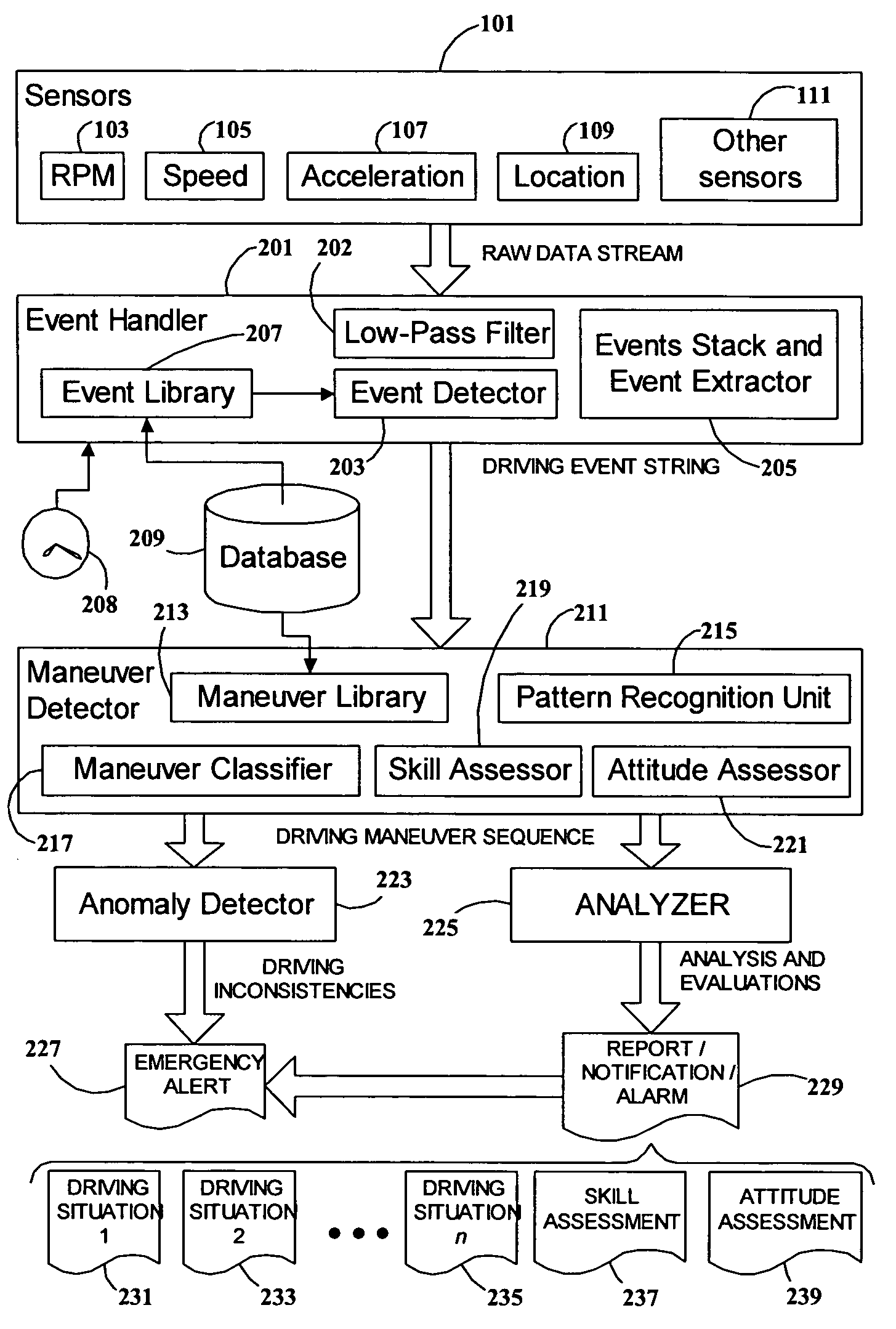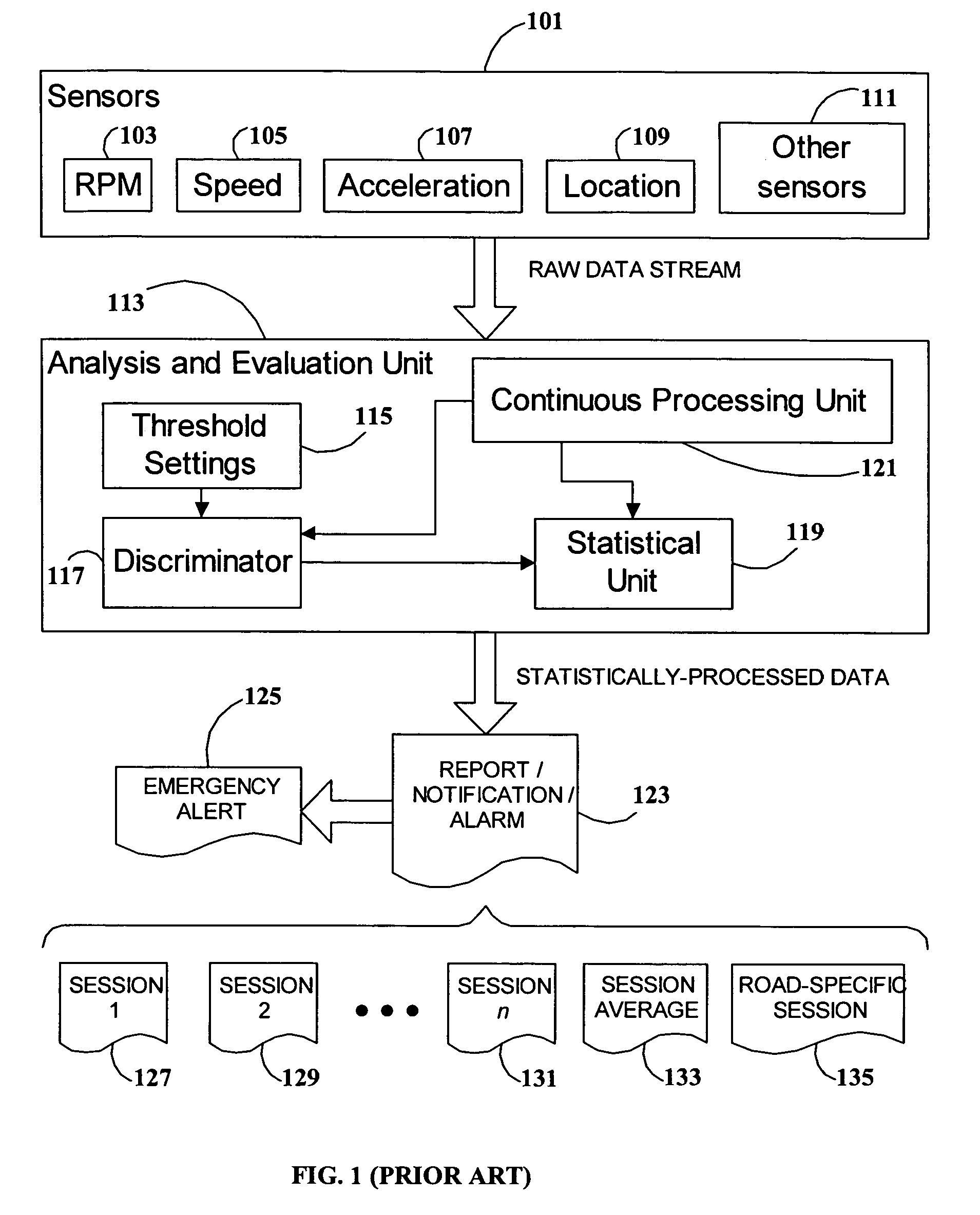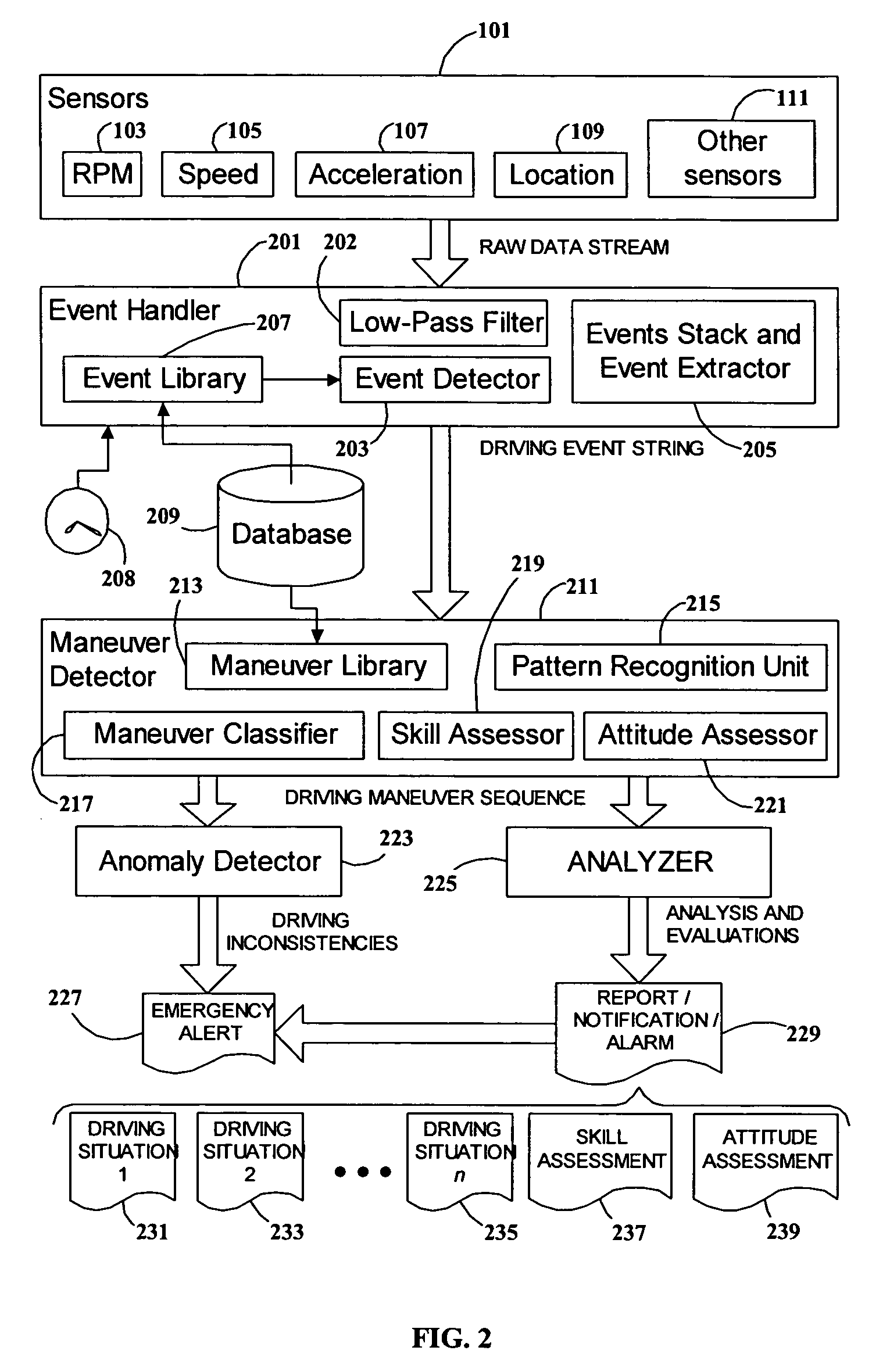On the other hand, Tokitsu's system is of limited value under other conditions.
Although the records of such behavior could be valuable, such strong braking is usually done under emergency conditions where the driver is already aware of the emergency, and where an alarm would be superfluous (and hence of little or no value), or perhaps distracting (and hence of dubious value or even detrimental).
Although Lemelson 111 presents this in the context of analyzing vehicle performance, however, there is no detailed discussion of precisely how an analysis of the resulting data would be done, nor how meaningful information could be obtained thereby.
Moreover, if excessive speed on that particular area is known to have been responsible for many accidents, the system could notify the driver of this.
The Kamishima system, in particular, does not analyze driving behavior in general, nor draw any general conclusions about the driver's patterns in a location-independent manner.
Although such an analysis can often distinguish between good driving behavior and erratic or dangerous driving behavior (via a driving “roughness” analysis), time-differentiation and threshold detection cannot by itself classify raw data streams into the familiar patterns that are normally associated with driving.
Providing a count of the number of times a driver exceeded a speed threshold, for example, may be indicative of unsafe driving, but such a count results in only a vague sense of the driver's patterns.
On the other hand, a context-sensitive report that indicates the driver repeatedly applies the brake during turns would be far more revealing of a potentially-dangerous driving pattern.
Unfortunately, however, the analysis performed by Kondo, which is typical of the prior art analysis techniques, is incapable of providing such context-sensitive information.
Although this is a useful approach in the case of physical impairments (such as those listed above), Gehlot's system is ineffective in the case of a driver who is simply unskilled or who is driving recklessly, and is moreover incapable of evaluating a driver's normal driving patterns.
Unsatisfactory driver behavior is determined when certain predefined threshold values are exceeded.
A driver whose behavior exceeds a statistical threshold from what is considered “safe” driving, can be deemed a “dangerous” driver.
Because Tano relies on statistical aggregates and thresholds which are acknowledged to vary according to road location and characteristics, however, a system according to Tano has limited ability to evaluate driver performance independent of the statistical profiles and thresholds.
In particular, the statistical characterization of a driver's performance is generally not expressible in terms of familiar driving patterns.
Both are possibly “dangerous” patterns, but a purely threshold-oriented statistical analysis, such as presented in Tano, may be incapable of discriminating between these, and therefore cannot attribute the resulting statistical profile to specific patterns of driving.
As noted for Kondo's analysis (above), Tano's statistical analysis is also incapable of providing information in terms of familiar driving patterns.
This feature, however, addresses only vehicle speed and safety belt use, and is not capable of analyzing driver behavior patterns.
Unfortunately, however, there are various driving patterns which cannot be classified on the basis of thresholds, and which are nevertheless pertinent to detecting questionable or unsafe driving behavior.
For example, it is generally acknowledged that driving too slowly on certain roads can be hazardous, and for this reason there are often minimum speed limits.
Driving below a minimum speed, however, is not readily detectable by a system such as SmartDriver, because introducing a low-speed threshold results in such a large number of false reports (when the vehicle is driven slowly in an appropriate location) that collecting such data is not normally meaningful.
Collecting raw physical data on vehicle operation through a multiplicity of sensors usually results in a very large quantity of data which is cumbersome to store and handle, and impractical to analyze and evaluate.
As a result, prior art systems and methods are generally limited to providing aggregate and statistically-processed overviews of driver performance.
These reports may be useful in analyzing and evaluating driver behavior, skill, and attitude, but the use of statistics based predominantly on thresholds or on localization of the driving, and the aggregation over entire driving sessions or groups of driving sessions also result in the loss of much meaningful information.
In particular, the details of the driver's behavior in specific driving situations are not available.
Perhaps the driver is fatigued, distracted, or upset, and thereby poses a hazard which consistency analysis can detect.
It is also possible that the driver has been misidentified and is not the person thought to be driving the vehicle.
Unfortunately, however, statistically aggregating data, as is done in the prior art, does not permit a meaningful consistency analysis, because such an analysis depends on the particular driving situations which are encountered, and prior art analysis completely ignores the specifics of those driving situations.
As another example of the limitations of the prior art, a new and relatively inexperienced driver might drive very cautiously and thereby have very “safe” overall statistics, but might lack skills for handling certain common but more challenging driving situations.
Prior art analysis systems and methods, however, might erroneously deduce that the more experienced driver poses the greater hazard, whereas in reality it is the apparently “safer” driver who should be scrutinized more carefully.
 Login to View More
Login to View More  Login to View More
Login to View More 


